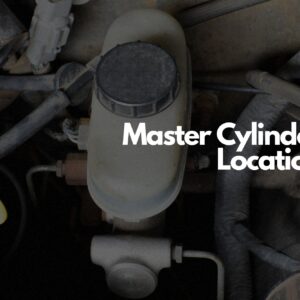Q: Where Are Brake Lines Typically Located?
A: Brake lines are located along the underbody of a vehicle. They extend from the master cylinder or ABS unit to the inner fender‘s edge.
Brake lines are long, small-diameter metal tubes that carry fluid pressure from the master cylinder to the brake assemblies. At the place where the brake fluid is fed to the front wheels, and where there is a rear axle, such as on a pickup, rubber brake lines make the final connection due to the need for flexibility.
The majority of brake lines are metal rather than rubber, which is only found at the wheels and rear axle. The tubes must hold over 2000 pounds of fluid pressure, which they transfer pressure from the master cylinder to the brake calipers or wheel cylinders. This hydraulic pressure causes the brake pads (in disc brakes) or brake shoes (in drum brakes) to come into contact with the braking rotors or drums, causing friction and slowing or stopping the vehicle.

Tips on How to Access the Brake Lines
You’ll need to jack up your vehicle before you can access the brake lines. Locate the master cylinder and remove the wheel. Don’t forget to place a drain pan under the wheel well where you’re doing the repair. This will catch leaking brake fluid.
To remove a bad brake line, you need to loosen the nut using a wrench. You’ll also need pliers to remove the retaining clip. Once you’re done, you can now remove the brake line. Don’t forget to plug the hole so that the brake fluid won’t leak out.

After plugging the hole, you’ll need to loosen the under end of the brake line from the junction box. Brake fluid will start to drain at this point, so be careful not to get any fluid on your skin or on the paint of your vehicle. Brake fluid is highly corrosive. After this step, you can now unclip the line from the body and remove it from the vehicle.
Any information provided on this Website is for informational purposes only and is not intended to replace consultation with a professional mechanic. The accuracy and timeliness of the information may change from the time of publication.






























